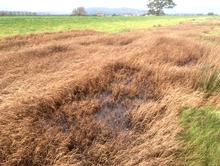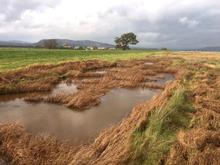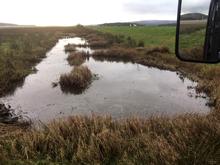Foulshaw Flashes maintained
WWA Committee member Dave Coward has once again cut the vegetation in these flashes by mechanised strimming. The sea club rush grows back vigorously through the spring and summer months, choking the wetlands, but then needs cutting back come the autumn to provide wetland habitat for the migrant and resident birds. By mid-Summer the rushes have provided good habitat for insects (black darter dragonfly and damselfly and for nesting birds. In 2018 WWA Secretary Andy Stott has been liaising with Natural England to gain a long term consent on the River Kent estuary S.S.S.I. to allow mechanised cutting of these flashes for a further 5 years. This consent was recently awarded to the WWA by Natural England. Both wetland sites were checked for the presence of wildlife prior to commencing cutting. The task was far less labour intensive than previously used manual methods and reduced the work force down considerably to one man; many thanks to Dave Coward.
The wildfowl (teal especially) love the fallen seed of Sea club rush in winter (image 1) so it’s a useful plant to have growing here in these wet spots. We do not wish to remove the sea club rush at the roots otherwise the wetlands become very lifeless and stagnate. We want them to grow back so the plant is cut at base level keeping the root base intact. We also leave strips (image 2) of seed bearing club rush as stands around the margins and within the flashes to create sheltered wind breaks for the feeding Snipe and other waders as well as providing a natural source of seed as the Scirpus martimus seed pods pop and scatter seed into the flashes. In the Winter months the flashes provide open water for the WWA members to shoot over. The wetlands areas are no more than 12 inches deep with margins of about 1-3 inches, just perfect foraging conditions for wildfowl and also waders such as Jack Snipe and Common Snipe.









